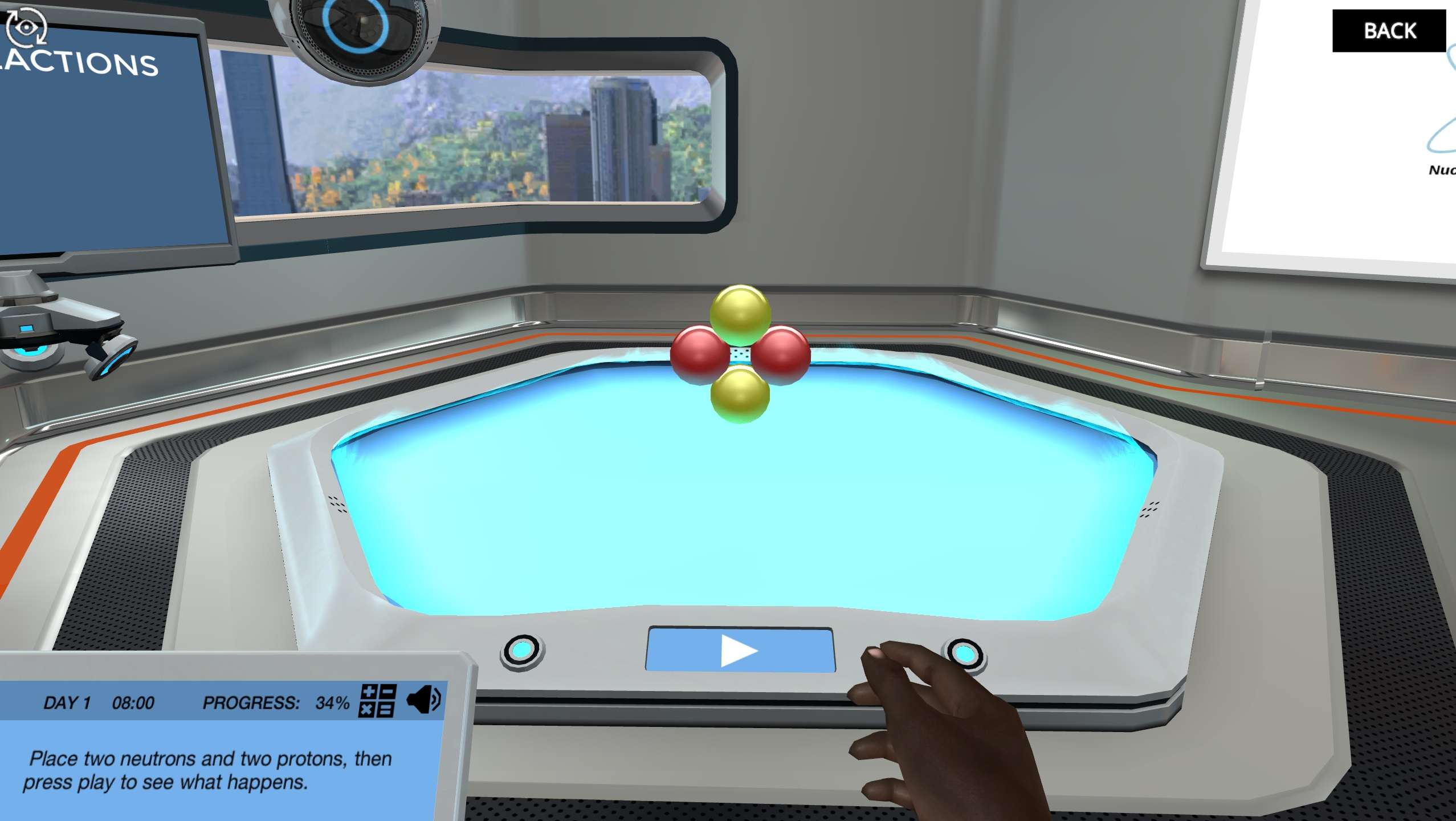Heading 1
Heading 2
Heading 3
Heading 4
Heading 5
Heading 6
Lorem ipsum dolor sit amet, consectetur adipiscing elit, sed do eiusmod tempor incididunt ut labore et dolore magna aliqua. Ut enim ad minim veniam, quis nostrud exercitation ullamco laboris nisi ut aliquip ex ea commodo consequat. Duis aute irure dolor in reprehenderit in voluptate velit esse cillum dolore eu fugiat nulla pariatur.
Block quote
Ordered list
- Item 1
- Item 2
- Item 3
Unordered list
- Item A
- Item B
- Item C
Bold text
Emphasis
Superscript
Subscript
About This Simulation
Have you ever wondered what’s inside the atomic nucleus? Why are some elements radioactive? What is radioactivity? The Nuclear Chemistry simulation will teach you the answer to these questions, and many more!
Learning Objectives
- Identify common subatomic particles and energies involved in nuclear reactions
- Recognize common modes of radioactive decay (alpha, beta, gamma) by observing differences in nucleic mass defect and/or binding energies
- Explain the concept of half-life
- Describe common applications of radioactive isotopes (nuclear medicine, radiometric/carbon dating, nuclear energy)
- Describe how carbon dating works
About This Simulation
Lab Techniques
Related Standards
- HS-PS1-8
- Unit 5: Kinetics
- Chemistry C.3 Nuclear fusion and fission
Learn More About This Simulation
Radioactivity is something that only happens in nuclear power plants, right?
In this simulation, you will learn that radioactivity is much more common than you might think—in fact, you are surrounded by it! You will also learn what types of atoms are radioactive and why, and how alpha, beta, and gamma decay generate different types of radioactivity.
Understand the processes happening in the atomic nucleus
Use our holofloor to visualize how protons and neutrons interact in the nucleus. Experiment with stability of isotopes and figure out why some combinations are more stable than others.
Analyze properties of alpha, beta, and gamma decay
Radioactive isotopes can undergo alpha, beta, and gamma decay. Each of these processes generates radioactivity; luckily, we are in a virtual simulation and we can experiment with these isotopes without being exposed to harmful levels of radiation. Additionally, you will be able to see how protons and neutrons interact in the nucleus thanks to our advanced holofloor.
Learn and put it into practice!
First, you will learn how particles interact in the nucleus and how alpha, beta, and gamma decay occurs. Then you’ll put those concepts into practice. With the help of only a scale, you will need to figure out the type of decay that three different isotopes are undergoing.
Experience Labster for Yourself
75% of students show high engagement and improved grades with Labster
Easily bolster your learning objectives with relevant, interactive content
Practice a lab procedure or visualize theory through narrative-driven scenarios

For Science Programs Providing a Learning Advantage




















FAQs
Find answers to frequently asked questions.
Heading 1
Heading 2
Heading 3
Heading 4
Heading 5
Heading 6
Lorem ipsum dolor sit amet, consectetur adipiscing elit, sed do eiusmod tempor incididunt ut labore et dolore magna aliqua. Ut enim ad minim veniam, quis nostrud exercitation ullamco laboris nisi ut aliquip ex ea commodo consequat. Duis aute irure dolor in reprehenderit in voluptate velit esse cillum dolore eu fugiat nulla pariatur.
Block quote
Ordered list
- Item 1
- Item 2
- Item 3
Unordered list
- Item A
- Item B
- Item C
Bold text
Emphasis
Superscript
Subscript
Labster is hosted online, which means that students only have to login from their internet browsers once an account is created.
Labster is only available for purchase by faculty and administration at academic institutions. To procure Labster, simply reach out to us on our website. Schedule a demo, book a meeting to discuss pricing, start a free trial, or simply fill out our contact form.
Labster simulations are created by real scientists and designed with unparalleled interactivity. Unlike point and click competitors, Labster simulations immerse students and encourage mastery through active learning.
Labster supports a wide range of courses at the high school and university level across fields in biology, chemistry and physics. Some simulations mimic lab procedures with high fidelity to train foundational skills, while others are meant to bring theory to life through interactive scenarios.











.png?fm=jpg&w=450&h=400)







